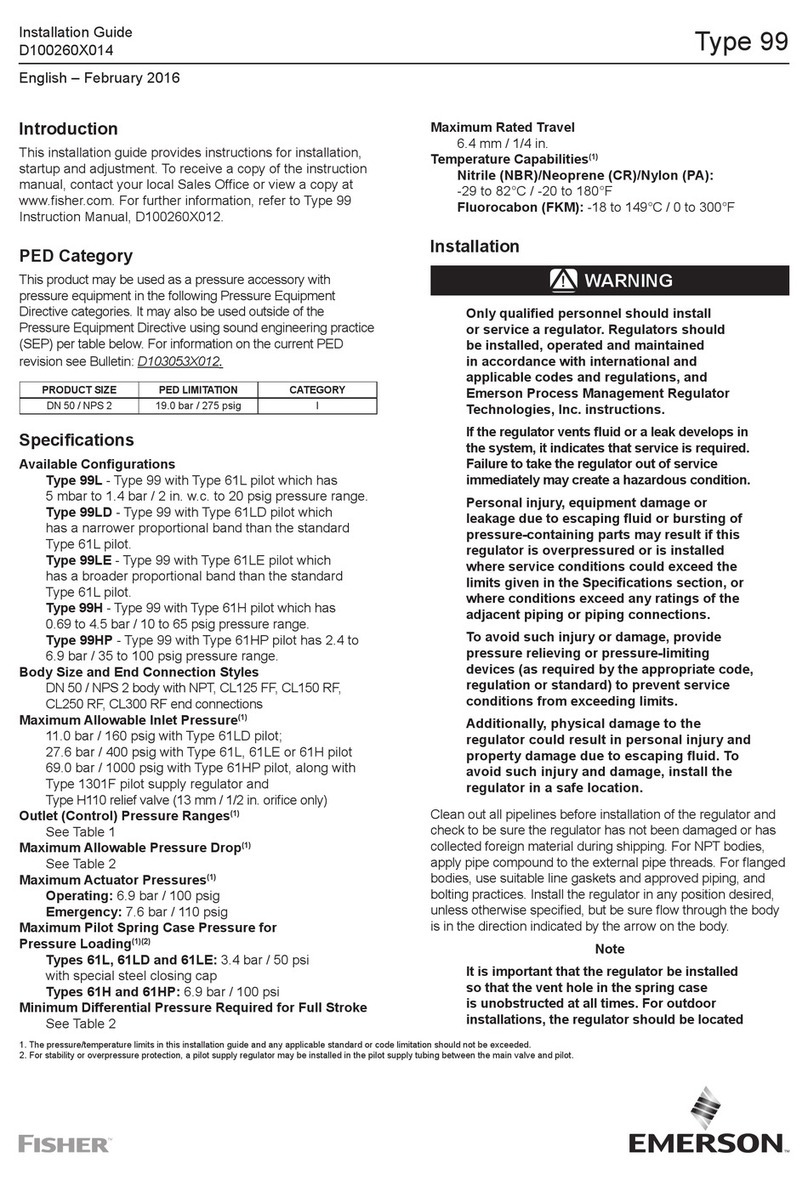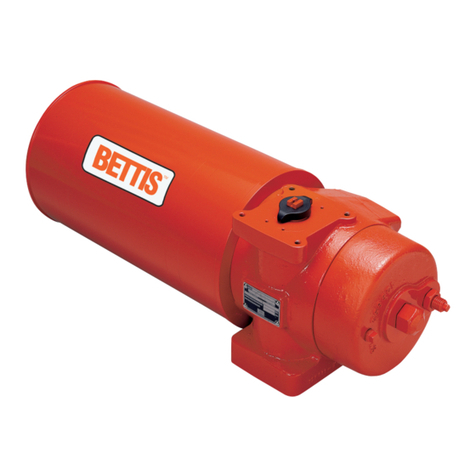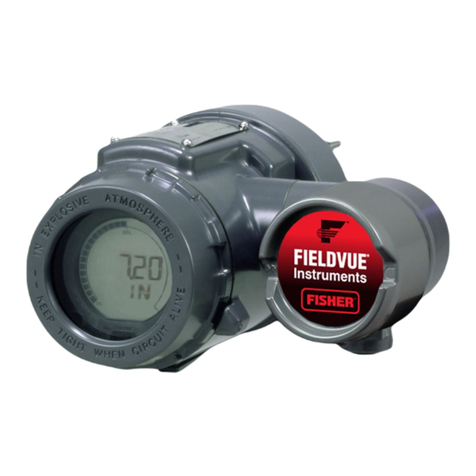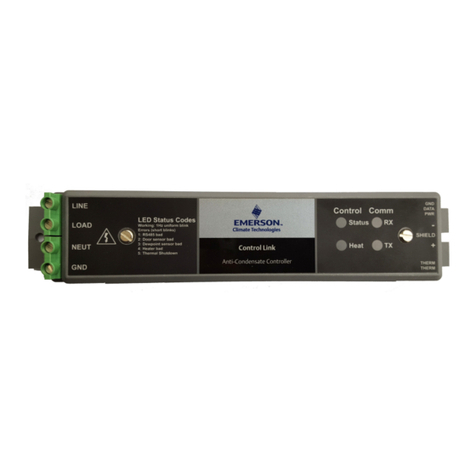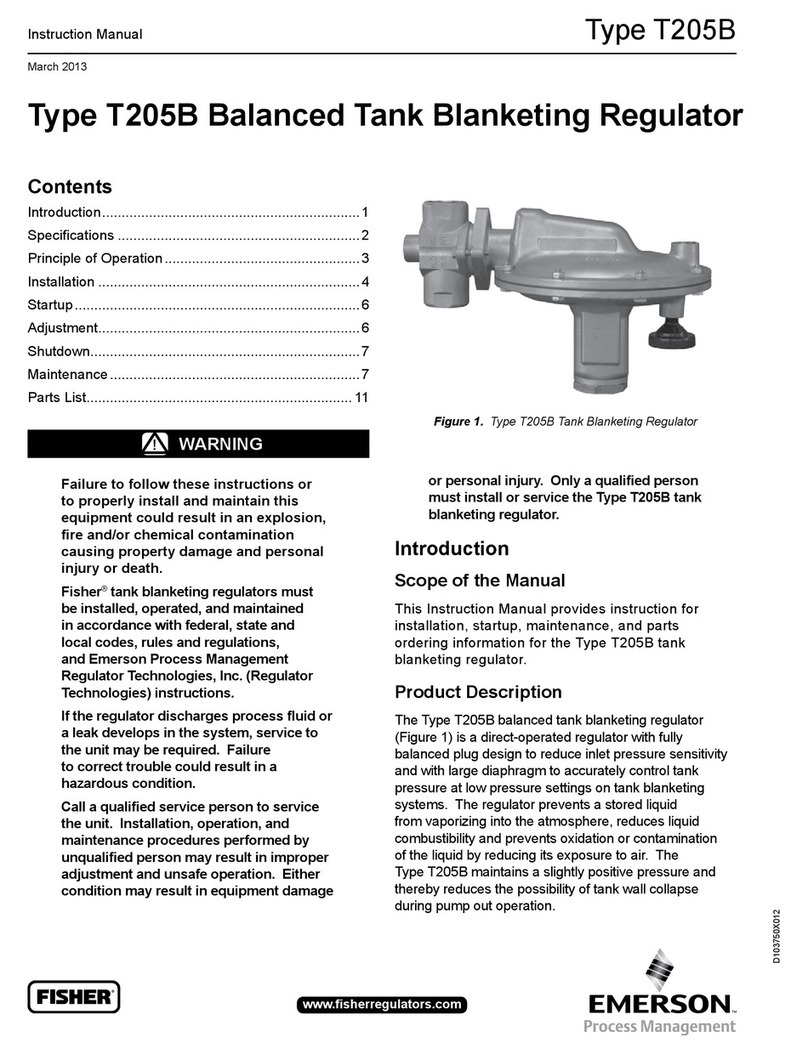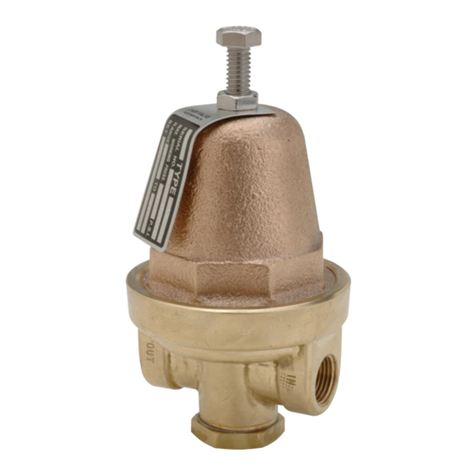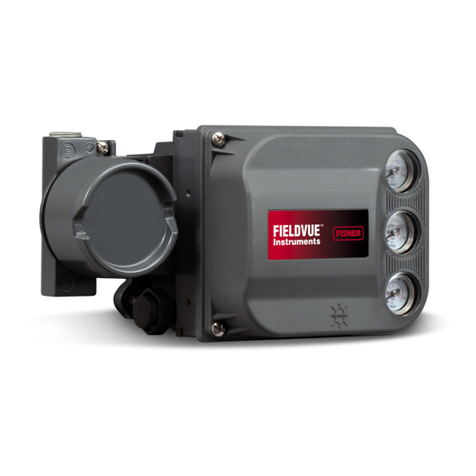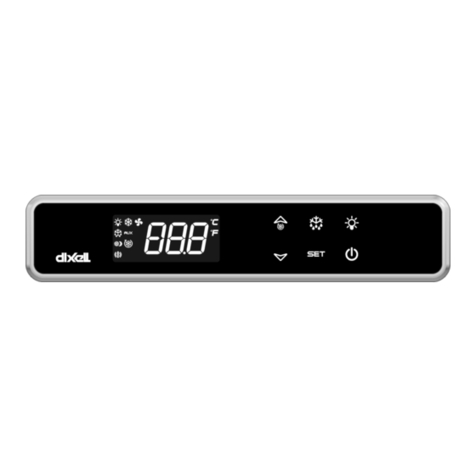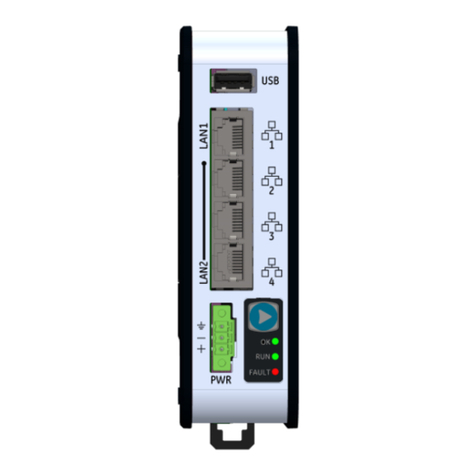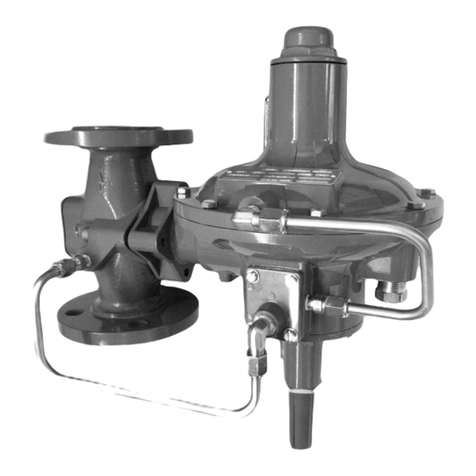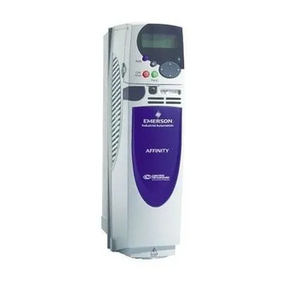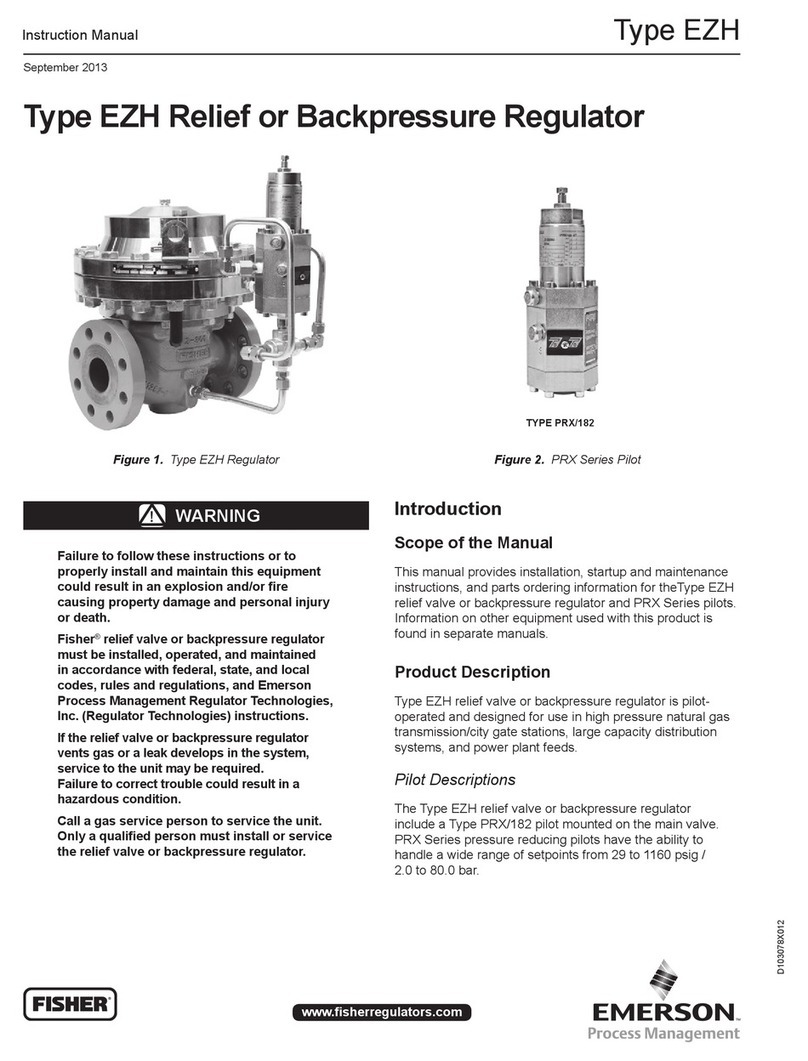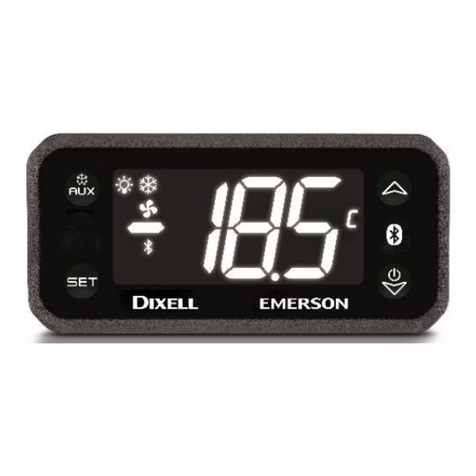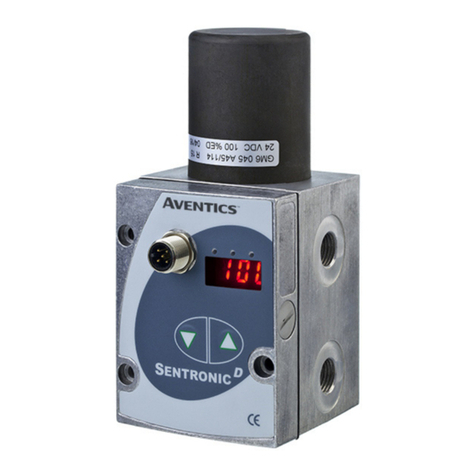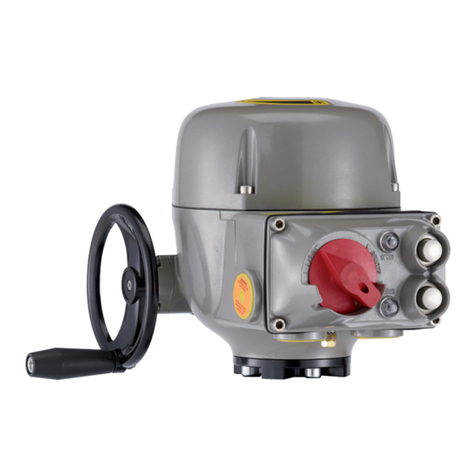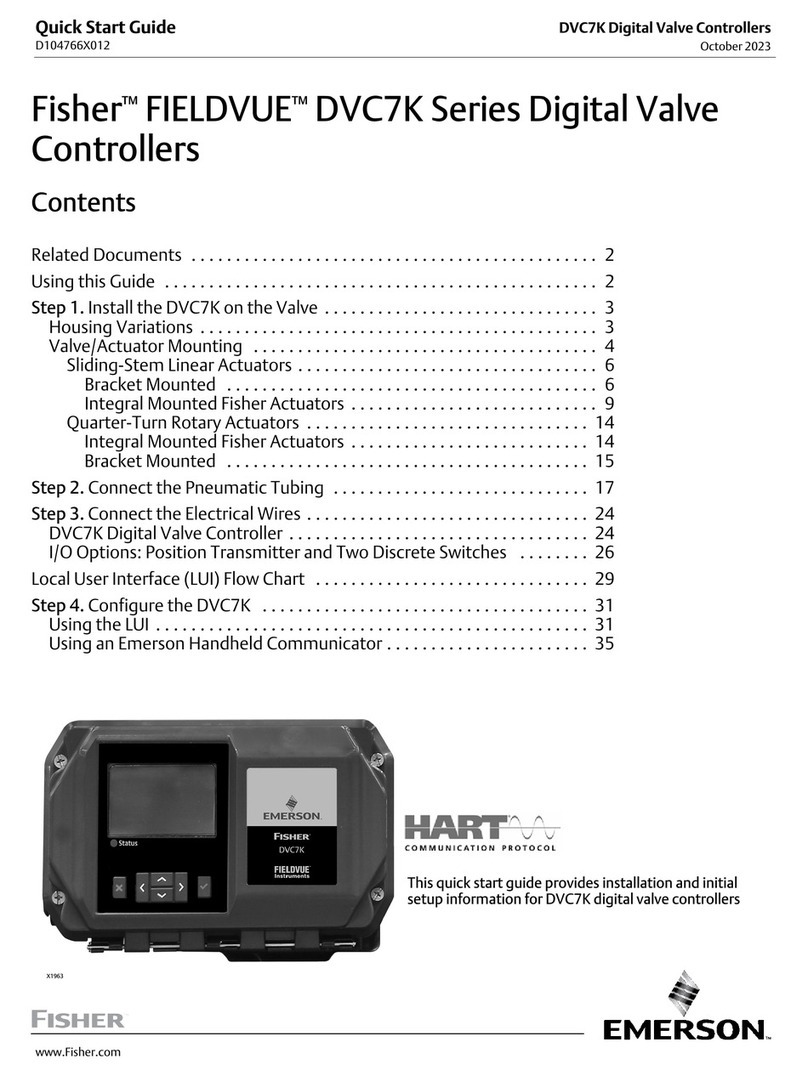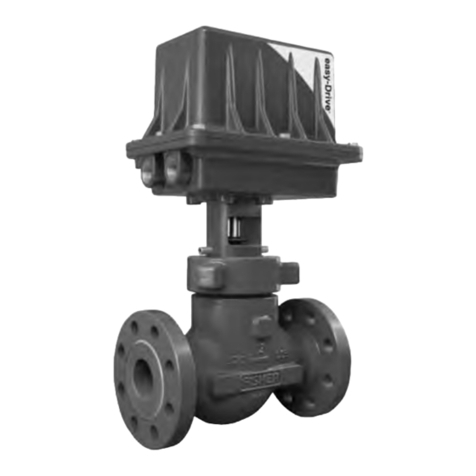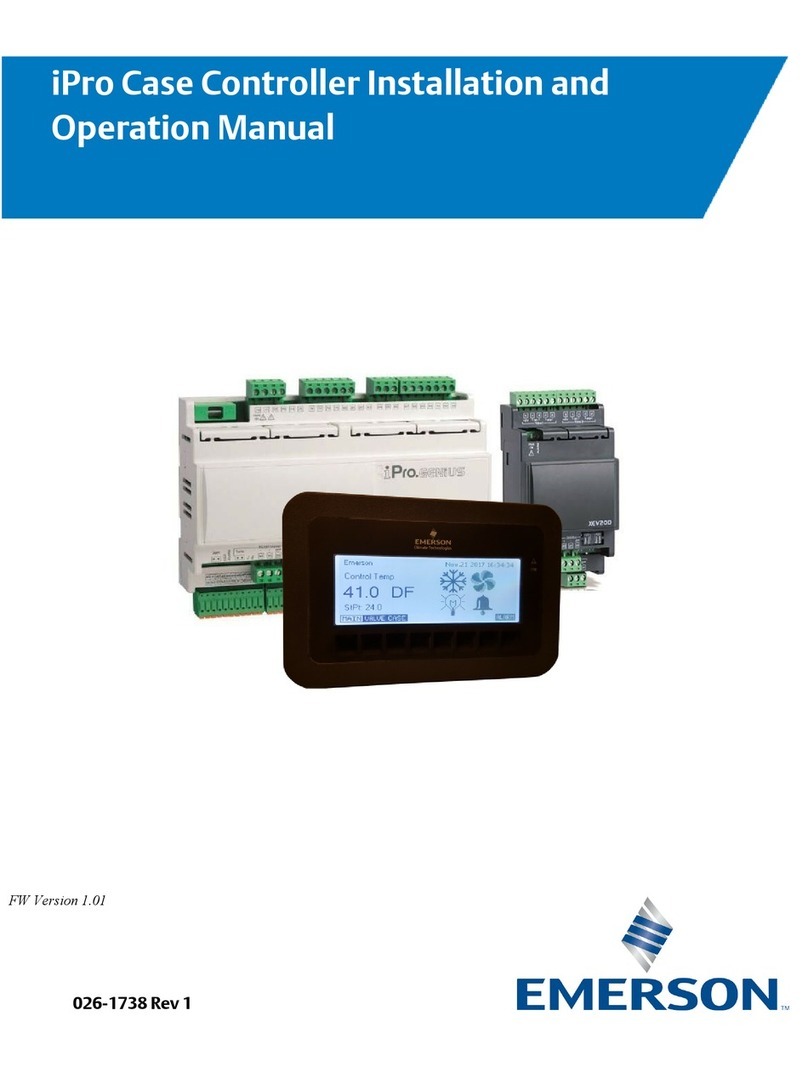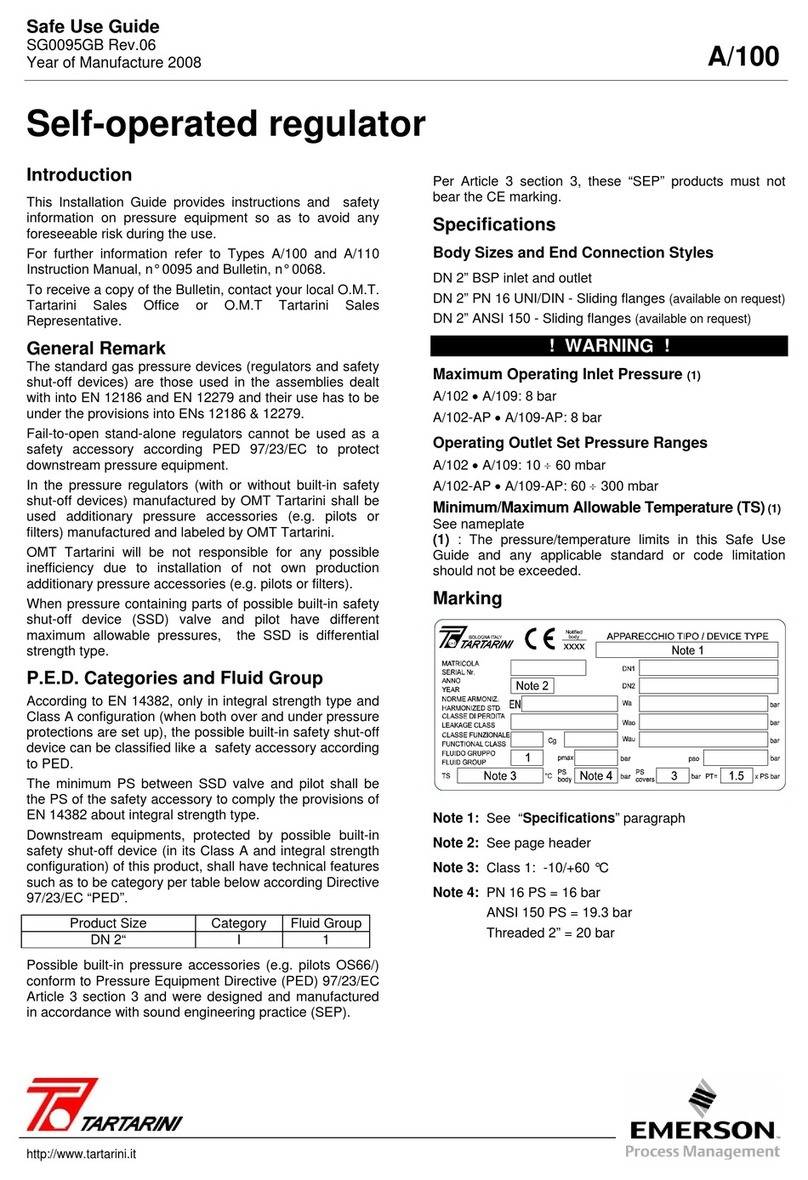
MN yMBN yMBN-M yMF yMBF yMBF-M Safe Use Guide
SG0125GB Rev.07
Year of Manufacture 2008
2
Marking
Note 1: See “Specifications” paragraph
Note 2: See page header
Note 3: Class 1: -10/+60 °C
Note 4: PN 16 PS = 16 bar
ANSI 150 PS = 19,3 bar
Note 5: 1,5 bar for M…N-BP/80-100
4 bar for all other models
Overpressure Protection
The recommended maximum allowable pressures are
stamped on the regulator nameplate.
If actual version hasn’t a built-in safety shut-off device,
some type of overpressure protection is needed if the
actual outlet pressure exceeds the actual maximum
operating outlet pressure rating.
Overpressure protection should also be provided if the
regulator inlet pressure is greater than the maximum
operating inlet pressure.
Downstream side pressure after possible built-in SSD’s
intervention shall stay within the actual maximum
operating set-up range to avoid anomalous back
pressures that can damage the SSD’s pilot.
Downstream overpressure protection shall be also
provided if the SSD outlet pressure can be greater than
the PS of the SSD pilot (differential strength type).
Regulator operation below the maximum pressure
limitations does not preclude the possibility of damage
from external sources or debris in the line.
The regulator should be inspected for damage after any
overpressure condition.
Transport and Handling
Established transport and handling procedures shall be
followed to avoid any damage on the pressure containing
parts by shocks or anomalous stresses.
Ringbolts are designed just for handling of equipment
weight.
Built-up sensing lines and pressure accessories shall to
be protected by shocks or anomalous stresses.
Installation
! WARNING !
Only qualified personnel should install or service a
regulator.
Regulators should be installed, operated, and
maintained in accordance with international and
applicable codes and regulations, and O.M.T. Tartarini
instructions.
If the regulator vents fluid or a leak develops in the
system, it indicates that service is required.
Failure to take the regulator out of service
immediately may create a hazardous condition.
Personal injury, equipment damage, or leakage due to
escaping fluid or bursting of pressure-containing
parts may result if this regulator is over pressured or
is installed where service conditions could exceed the
limits given in the Specifications section, or where
conditions exceed any ratings of the adjacent piping
or piping connections.
To avoid such injury or damage, provide pressure-
relieving or pressure-limiting devices (as required by
the appropriate code, regulation, or standard) to
prevent service conditions from exceeding limits.
Additionally, physical damage to the regulator could
result in personal injury and property damage due to
escaping fluid.
To avoid such injury and damage, install the regulator
in a safe location.
Before installation, check shall be done if service
conditions are consistent with use limitations and if
pilot set-up of possible built-in safety shut-off device
are in accordance with service conditions of protected
equipment.
All means for venting have to be provided in the
assemblies where the pressure equipment are
installed (ENs 12186 & 12279).
All means for draining have to be provided in the
equipment installed before regulators & shut-off
devices (ENs 12186 & 12279).
Further the ENs 12186 & 12279, where this product is used :
−provide the cathodic protection and electrical
isolation to avoid any corrosion and
−in accordance with clause 7.3/7.2 of aforesaid
standards, the gas shall be cleaned by proper
filters/separators/scrubbers to avoid any technical
& reasonable hazard of erosion or abrasion for
pressure containing parts.
Pressure equipment in subject shall be installed in non-
seismic area and hasn’t to undergo fire and thunderbolt
action.
Clean out all pipelines before installation of the regulator
and check to be sure the regulator has not been damaged
or has collected foreign material during shipping.
Use suitable line gaskets and approved piping and bolting
practices.
